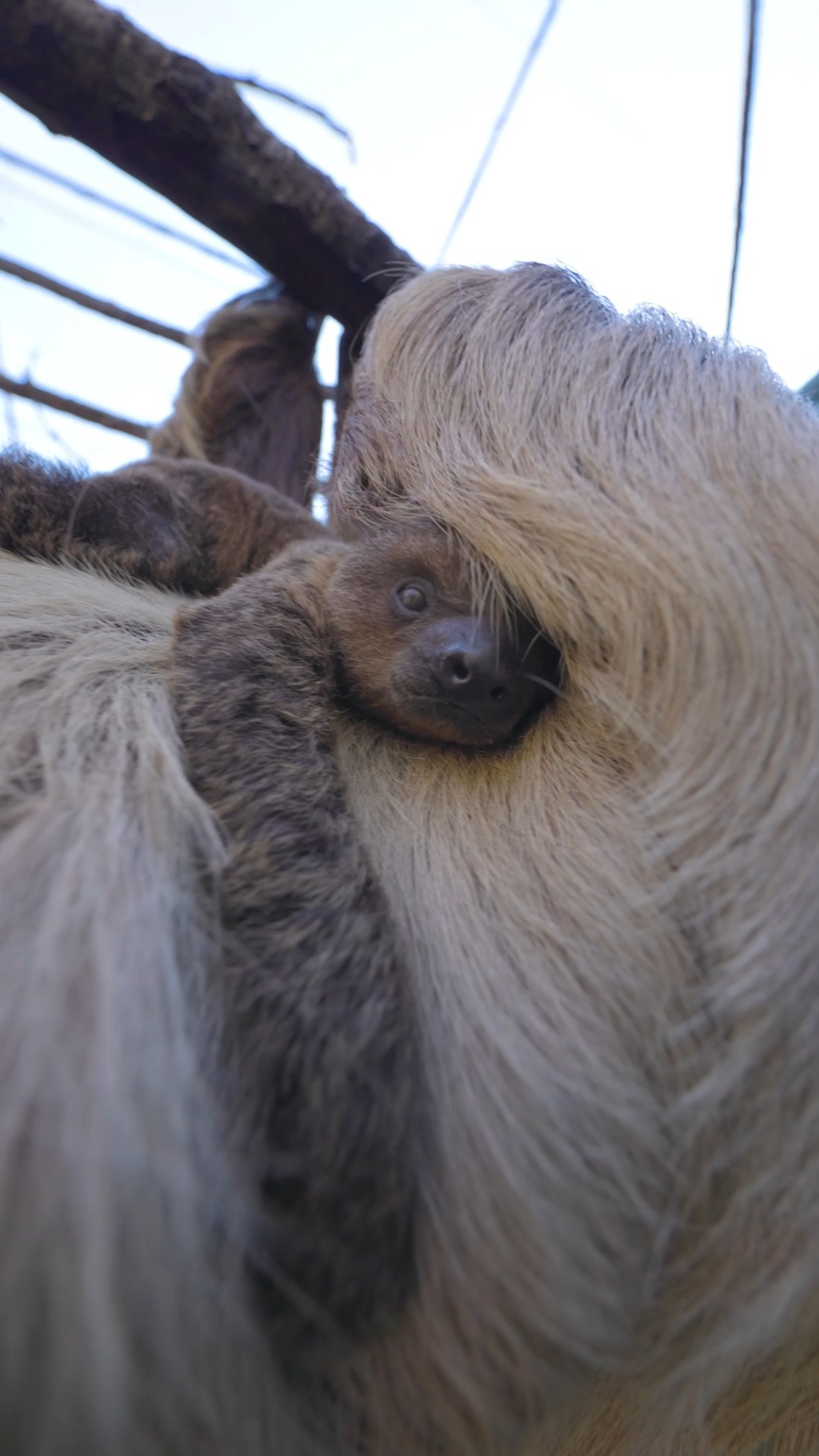- The significance of sloths in the ecosystem and their unique biological adaptations.
- The role of zoos in sloth conservation and their broader impact on wildlife preservation efforts.
- Understanding the physiological and behavioral characteristics of baby sloths.
- The challenges and strategies of zoo management in ensuring the welfare and education of both animals and visitors.
- The importance of public engagement and educational outreach through platforms like Instagram for wildlife conservation.
Sloths, known for their unhurried lifestyle and endearing expressions, serve crucial ecological roles in their natural habitats. Found primarily in Central and South America’s tropical rainforests, sloths contribute significantly to the health of their ecosystem. These arboreal mammals have developed extraordinary adaptations to thrive in such environments. Their slow metabolism and deliberate movements help in conserving energy, an adaptation suited to their low-caloric diet of leaves. This unique dietary habit also makes them effective seed dispersers, promoting forest regeneration and biodiversity.
Sloths possess specialized limbs with strong, curved claws that allow them to hang effortlessly from tree branches. Their fur hosts a symbiotic relationship with algae, providing camouflage against predators and serving as a habitat for various microorganisms. This interaction highlights the interconnectedness of rainforest species, emphasizing the impact of every organism, regardless of size. Understanding these intricate ecological roles underscores the importance of sloth conservation efforts, both in their natural habitats and through the work of modern zoos.
Zoos play an integral part in global wildlife conservation. They serve as bastions of learning and centers for conserving endangered and vulnerable species like sloths. Not only do they provide shelter and care, but they also facilitate breeding programs to preserve genetic diversity. These programs are vital as sloth populations are increasingly threatened by habitat destruction and climate change. Zoos collaborate internationally on breeding efforts to ensure a healthy and diverse population that can potentially be reintroduced into the wild.
Additionally, zoos operate as vital educational platforms, raising awareness about the challenges facing sloths and other wildlife. Through engaging experiences, visitors gain a greater appreciation for conservation issues and the actions required to mitigate them. These institutions foster a connection between people and animals, cultivating an awareness that can inspire future conservationists.
Baby sloths possess a set of characteristics that make them particularly fascinating. They are born with a unique physiology that is adapted to hanging from their mothers for the initial months of life. This bonding period is essential for learning survival skills such as recognizing the correct foliage to consume and developing the gripping strength needed for their arboreal lifestyle. These formative months are crucial; young sloths are highly susceptible to environmental changes and human-induced threats. Providing a secure and nurturing environment is fundamental for their development, particularly in captive settings.
In zoos, caring for baby sloths requires expertise and precision. The balanced replication of their natural habitat, including temperature and dietary needs, is pivotal. Zoo management teams are tasked with the complex job of creating these ideal conditions. Proper animal husbandry practices and continuous observation help ensure that young sloths are healthy and thriving. Employing skilled staff and conducting ongoing research are aimed at improving the quality of life not only for baby sloths but for all animals in care.
Engagement through digital platforms has emerged as a powerful tool for wildlife conservation. Social media, especially Instagram, is leveraged by zoos to reach a global audience and share heartwarming content, such as videos of baby sloths. This digital outreach extends the educational mission of zoos beyond physical boundaries, helping to foster a global community committed to conservation. Viral content featuring animals captivates audiences and can drive support for various conservation campaigns and initiatives.
Public participation in wildlife conservation is increasingly important as it builds a sense of shared responsibility. Platforms like Instagram enable zoos to participate in this dialogue by providing a steady stream of engaging, informative, and visually appealing content. This strategy not only enlightens the public but also encourages them to take actionable steps in wildlife preservation efforts. By instilling a sense of wonder and attachment, zoos can mobilize people into conservation advocates.
Ultimately, the interconnected stories of sloths, conservation, and the powerful reach of social media illustrate the potential of technology and human compassion in addressing contemporary ecological challenges. With the combined efforts of zoos, conservationists, and the public, it is possible to create a sustainable future for sloths and their rainforest homes. Through awareness, education, and action, the mission to conserve biodiversity can be strengthened, ensuring the survival of countless species and the ecosystems that depend on them.
*****
Source Description
It’s chilly outside today, but this throwback video of our baby sloth is here to warm your heart! 💖


